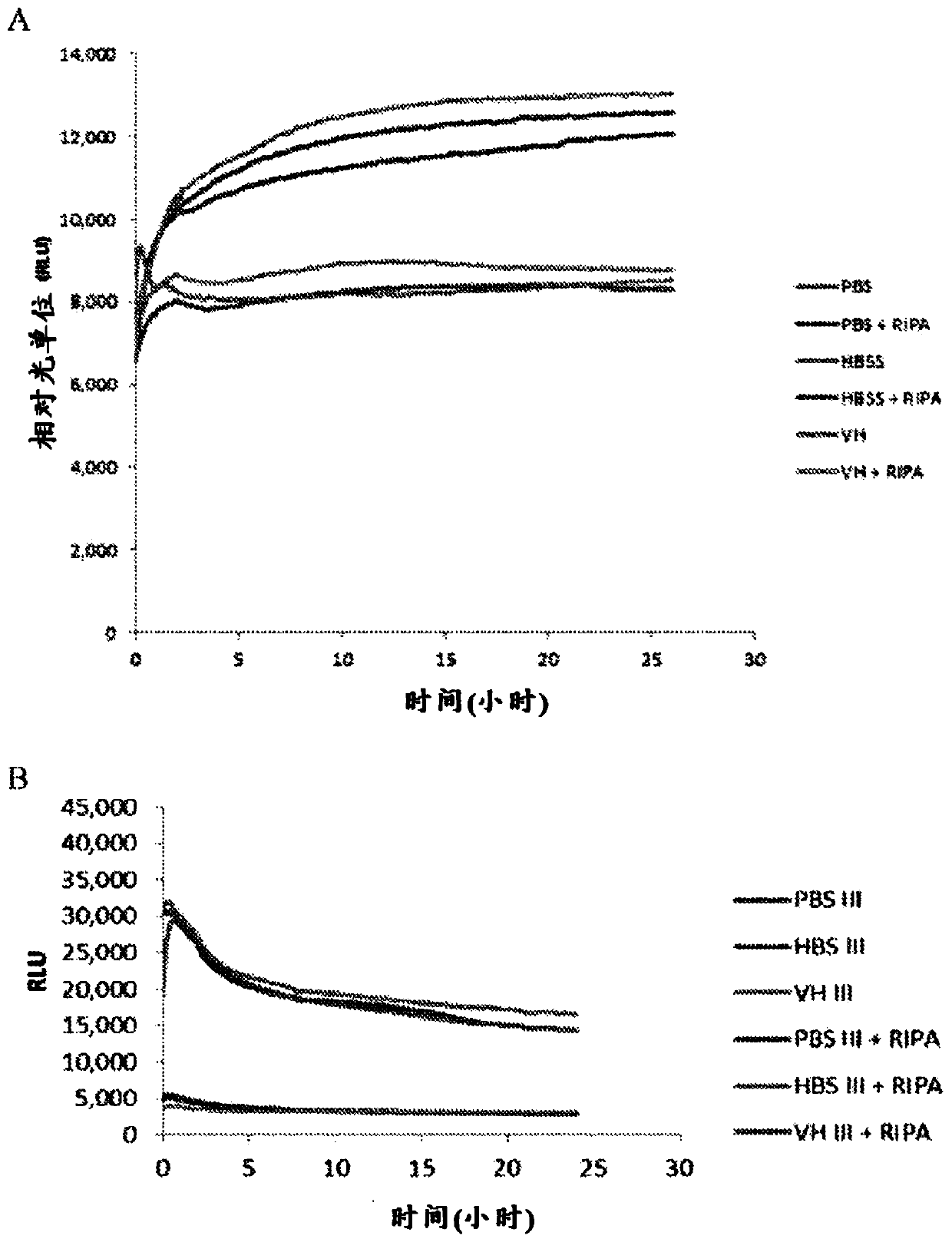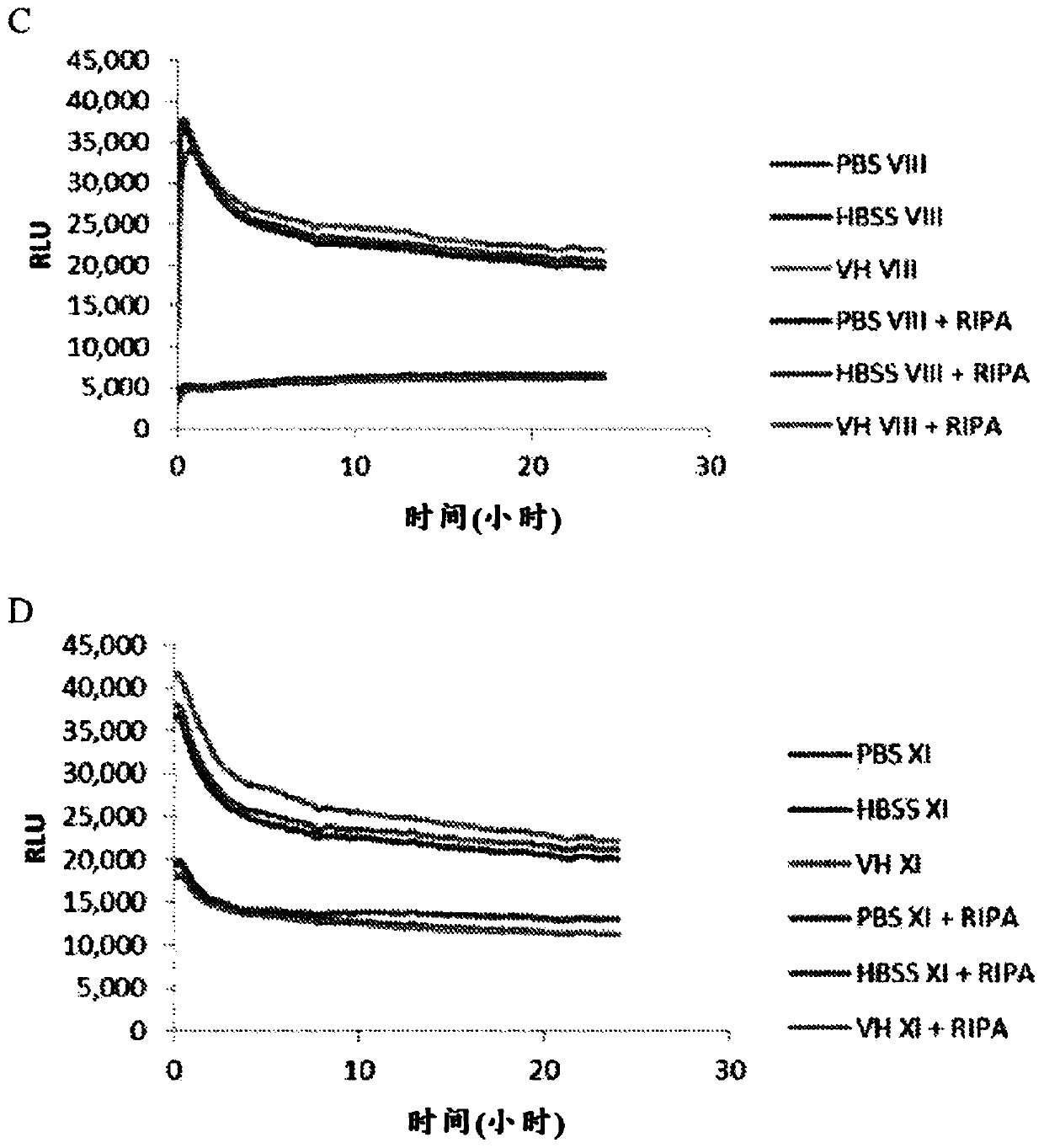Delivery of urea to cells of the macula and retina using liposome constructs
A technology of constructs and liposomes, applied in the directions of liposome delivery, drug delivery, emulsion delivery, etc.
- Summary
- Abstract
- Description
- Claims
- Application Information
AI Technical Summary
Problems solved by technology
Method used
Image
Examples
preparation example Construction
[0074] III. Preparation of liposome constructs
[0075] SUVs can be prepared by methods known in the art such as solvent evaporation, reverse phase evaporation, dehydration-rehydration, detergent dialysis, thin film hydration (Bangham method), detergent subtraction, solvent (e.g. ether / ethanol ) injection, emulsion method, dense gas method, supercritical fluid method, etc. For example, a lipid mixture can be dissolved in an organic solvent and then dried to form a lipid film. The dried lipid film can then be hydrated and sized, e.g., by extruding the lipid film through an orifice of reduced pore size, which results in lipids consisting of unilamellar liposomes and having a standardized uniform diameter body constructs.
[0076] To prepare liposome constructs comprising urea, the lipid film can be hydrated with a urea solution such that the lipid film becomes encapsulated within the interior of the SUV forming the liposome construct. After removal of unentrapped urea using...
Embodiment 1
[0104] Example 1. Research on Candidate Formulations
[0105] Several liposomal formulations were initially considered, shown in Table 1.
[0106] Table 1
[0107]
[0108]
[0109] All lipids were purchased from Avanti Polar Lipids, Inc. (Alabaster, AL). Formulations 1, 3, 8, 11 and 12 were prepared with carboxyfluorescein. Briefly, in 1x PBS (HyClone TM A 100 mM solution of carboxyfluorescein was prepared in Cat# SH0256, GE Healthcare, Marlborough, MA) and the pH was adjusted to 6.5-7.5 with 1% NaOH. This solution was filtered and used to prepare self-quenching liposomes. Lipid films were dried under a stream of nitrogen followed by vacuum for at least 2 hours and rehydrated with 100 mM carboxyfluorescein solution. Pass the rehydrated liposomes through a 0.2 μm filter membrane ( MilliporeSigma, Darmstadt, Germany) extrusion. Liposomes were separated from unencapsulated carboxyfluorescein by size exclusion chromatography on a Sephadex G75 column (Sigma Aldrich, ...
Embodiment 2
[0112] Example 2. Urea Encapsulation and Stability Studies
[0113] Urea has been shown to induce posterior vitreous detachment (PVD) in patients with moderate-to-severe diabetic retinopathy; however, clinical application has been hampered by the inability to consistently deliver sufficient drug to the back of the eye.
[0114] Formulations 1, 2, 3, 12 and 14 were prepared (Table 1). All lipids except cholesterol were obtained in chloroform solution; cholesterol powder was added to the chloroform solution in the desired ratio. Cholesterol was evaporated via nitrogen flow, followed by lyophilization to evaporate chloroform-lipid samples. The resulting lipid cake was hydrated with 100 μL of a 1 g / mL urea (Invitrogen cat# 15505035, Carlsbad, CA) solution, stirred at 4 °C for 30 min, and extruded using a two-step extrusion process with 0.8 μm and 0.2 μm filters . To find out the encapsulation efficiency, an aliquot of the 1 g / mL urea solution was obtained and the mass of urea i...
PUM
| Property | Measurement | Unit |
|---|---|---|
| The average diameter | aaaaa | aaaaa |
| Granularity | aaaaa | aaaaa |
| Proportion | aaaaa | aaaaa |
Abstract
Description
Claims
Application Information
 Login to View More
Login to View More - R&D
- Intellectual Property
- Life Sciences
- Materials
- Tech Scout
- Unparalleled Data Quality
- Higher Quality Content
- 60% Fewer Hallucinations
Browse by: Latest US Patents, China's latest patents, Technical Efficacy Thesaurus, Application Domain, Technology Topic, Popular Technical Reports.
© 2025 PatSnap. All rights reserved.Legal|Privacy policy|Modern Slavery Act Transparency Statement|Sitemap|About US| Contact US: help@patsnap.com



